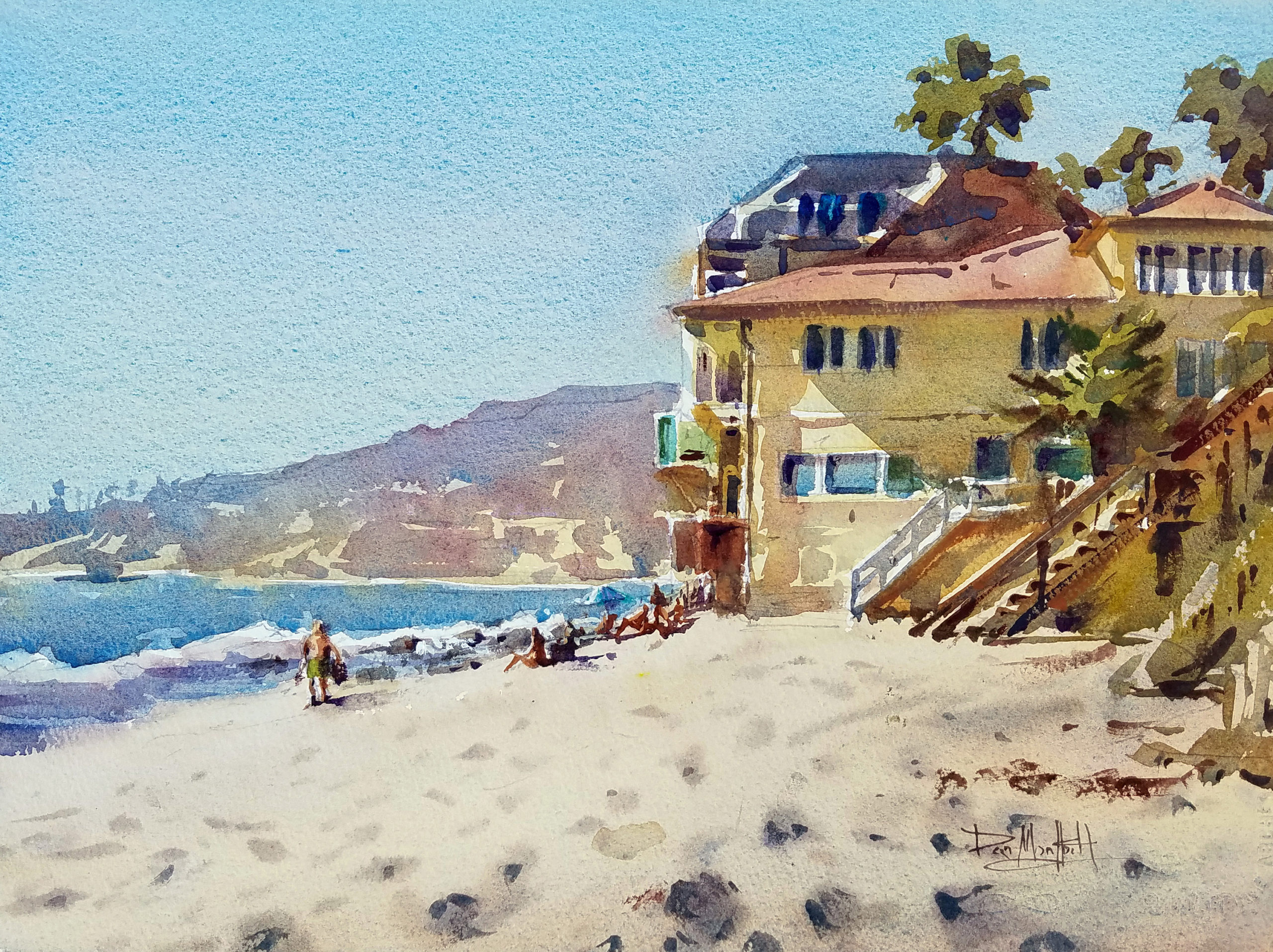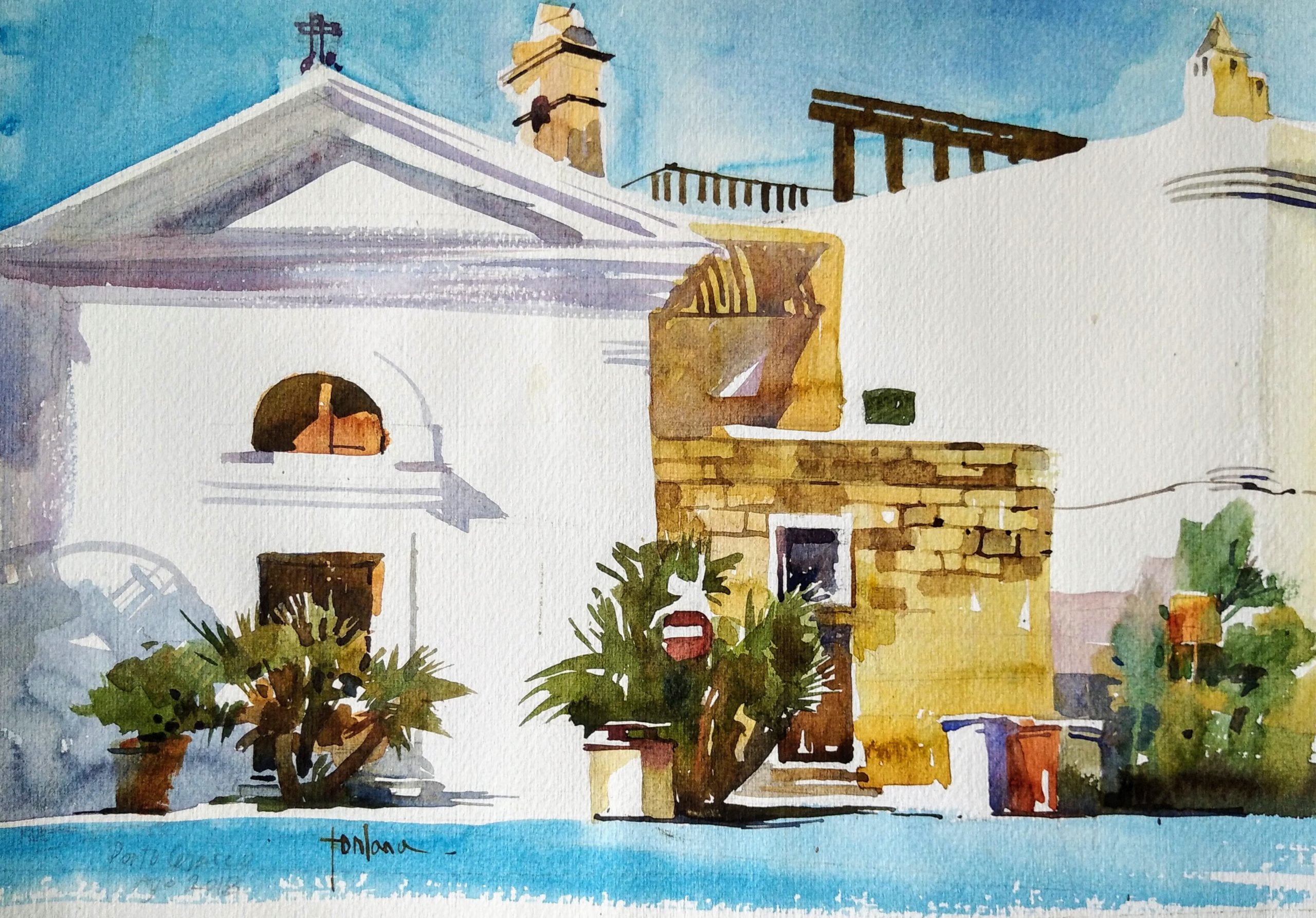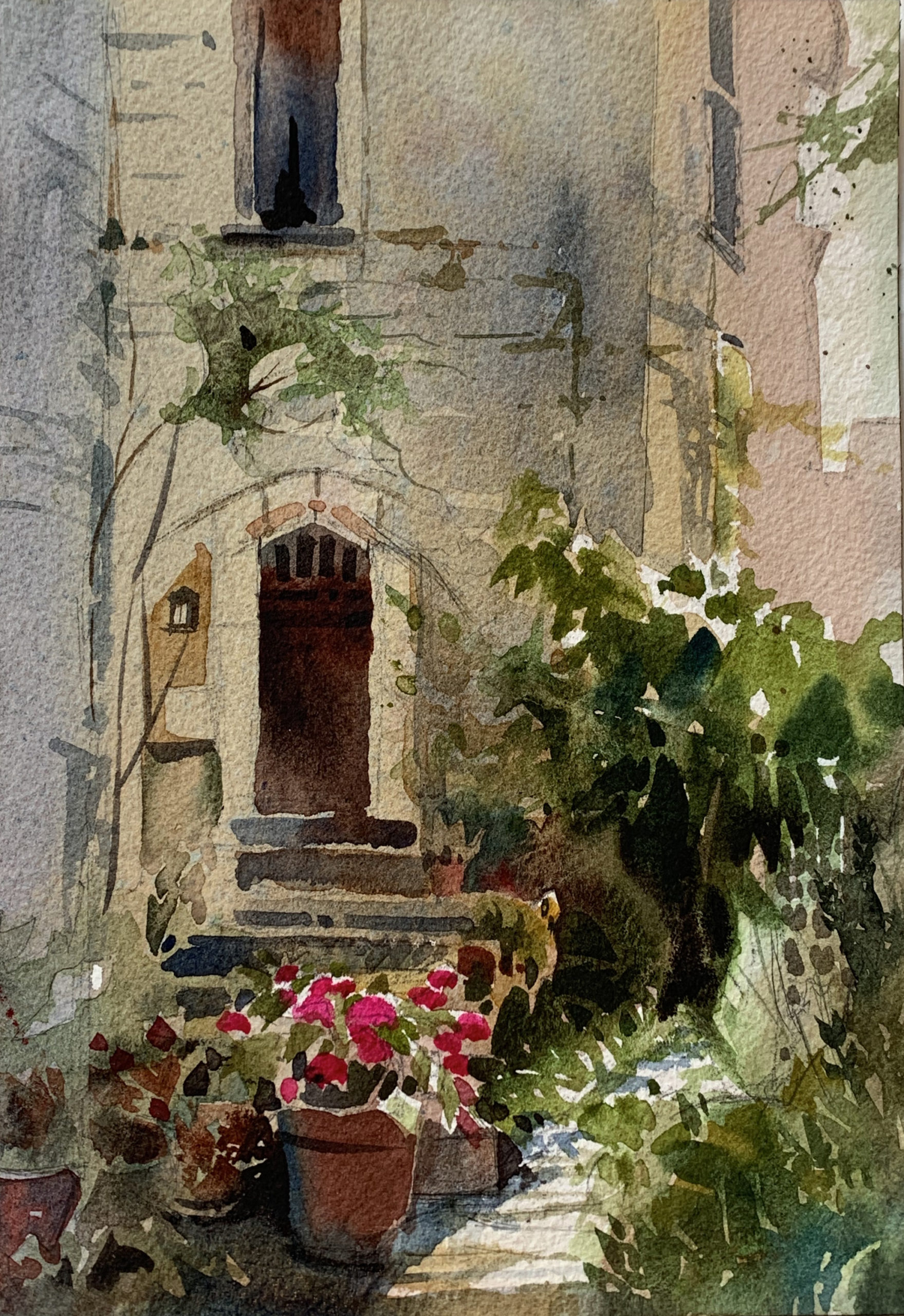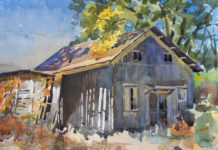
Cindy Baron
I believe the average collector doesn’t realize that watercolors are one of the most difficult mediums to paint with and take so much time to master. Materials in this age are also much more archival than in the past and much more expensive. Framing a watercolor is not easy. I used to work in a frame shop, so I learned a lot about how to frame a watercolor. Using the right supplies, and picking archival mats and museum glass, help in preserving the watercolor for the future. Most collectors like the look of oils, which are framed without glass, but now there is non-glare glass and others that give an almost no-glass look.

“Sweet Spot” (watercolor, 11 x 15 in.) by Dan Mondloch
Dan Mondloch
Painting with watercolor is definitely a dance between accuracy and a loose handling of the medium, and it is exactly that thrill that is visible and so appealing in the final painting. I think that’s one of the reasons that more and more collectors are choosing to add watercolors to their prestigious collections, especially when it is clear in this day and age that longevity is no longer a real concern with this medium. In fact, collectors buy more of my watercolors than oils at plein air events where I have both on offer.

Francesco Fontana
Watercolor has a very long tradition, way older than oil, if we think of Chinese art. Collectors should understand that mastering the art of watercolor is harder than any other media. Masters such as Anders Zorn, John Singer Sargent, Giovanni Boldini, and J.M.W. Turner all painted beautifully in both oil and watercolor. Doubt about the durability of paper as a support is risible. Today’s papers have a stunning museum quality: 100 percent cotton, acid-free, and archival — and they can be more costly than canvas! Remember, papyrus came intact from ancient Egypt. Nowadays pigments are also of super quality. All in all, watercolor should be valued and priced equally if not more than oil paintings. So, my advice to collectors: Better buy now while watercolors are still accessible!

Carolyn Lord
Watercolor is an extremely durable art medium as long as the paintings are properly framed, hung, or stored. I don’t believe watercolor will never override the dominance of oil, but for the collector, a watercolor can be an intimate insight into the artist’s thinking.
Collectors can seek out painters’ watercolors as an insight to their oils. Or focus on artists whose main body of work is in watercolor as way to build an art collection. What someone collects is an extremely personal decision, but it can also be influenced by timing or opportunity, by peers, education, cultural, or social cues.

Kristi Grussendorf
I think the worst misconception about watercolor is that it isn’t archival. I also struggle with the whole framing issue. I understand that glass tends to create a separation between the viewer and the painting and frankly, it’s an added cost (both for framing and shipping). To combat that disconnect and cost, I have stretched watercolor paper on stretcher bars, then fixed the finished pieces with an acrylic coating, and framed them just like an oil. But until the watercolor organizations start accepting these non-traditional framing techniques, it will be a hard switch for me to make.








Kristi is right. More and more, artists are varnishing their work and collectors are loving it! But artists also paint for competitions and the rules oftentimes still restrict us from entering varnished pieces. In the last couple of years, I’ve seen them accepting works on Yupo and watercolor canvas. I eagerly await their acceptance of varnished pieces as well! Times are “achanging”, and for the better!
Agree with you Helen re Kristi comments. Watercolor has been my medium number one choice going back over twenty years. I do remember a painting that I had sold to a customer and I was choked to see the changes that had bleached it so badly, even with the matting and glass. It was then that I started to learn and discovered how to varnish and protect all my watercolor paintings over the years. The day a painting is finished ,I start the process of varnishing and mounting the back on a solid archival material. It is amazing to see the colors come to life when finished, ready to be mounted on regular framing. Sure I have had watercolor artists make comments but I am sticking to my way and it is so nice to see them finished this way , so easy to handle, to clean or dust them knowing they will last way after I am gone .
Loved this article, I have been frustrated for years by the notion that buyers should avoid watercolors for significant collections. I have painted more than 20 years in watercolor and given the difficulty of the medium and the archival quality to the medium and papers, I would like a little more consideration.
Another method of presenting watercolours without glass is to coat the gallery-wrapped watercolours with 2-3 coats of Dorland Wax, a water-free, fume-free way of protecting your work allowing it to be hung either without a frame or framed without glass.
Sorry, I’m a traditionalist. I love the glow of watercolor under glass! I do my own framing.
I see more and more writing about how difficult this medium is. I teach for colleges and the women’s prison. The first thing I tell them is that watercolor is not more difficult, you simply approach it differently.
Hello
I agree to all here that watercolors are difficult to master & given the quality of supplies now available, the apprehension regarding its longevity is absolutely misplaced. As an alternative to the traditional method, I’ve used a primed canvas coated with watercolor ground & then painted normally. Later, I sprayed a fixative on it … it was a commission by an oil-painting collector, who really went gaga over it!
I’ve been using a lot of watercolor canvas. It is easier to correct mistakes for one ting and can be hung without a frame. so far have had no fading issues but I would like more instructions on how to varnish them. Is this done with acrylic medium?
Wonderful informative article about this beautiful medium. I am Catherine, the owner of Raymar Panels. We were approached to create a watercolor panel with archival mould-made watercolor paper mounted on ACM panels. We introduced our new watercolor panels with Fabriano Artistico 140lb cold press and have now added Fabriano Artistico 140 lb rough. You can try one at http://www.raymarart.com/watercolorpanels
Many artists have developed their own approach to varnishing or waxing the painting to frame it without glass. Matthew Bird, a member of the National Watercolor Society, has written a great article about his technique for framing without glass, https://matthewbird.com/blog/2019/11/4/my-watercolor-varnishing-process
Fortunately some of the watercolor societies are re-examining their position on watercolor art framing. We love watercolors ourselves and hope to help watercolor artists get the recognition they deserve.
I am with several here. Our local Watercolor Society does have an alternative framing technique. Mounting the watercolor to an acid free surface and using UV Archival Varnish (Krylon is my go to) and a traditional frame. My patrons love them. No Glass, No Glare. I will not go back to under glass. For Plein Air events – plein air panels are created. Pre mounted watercolor paintings, stamped on the back at check in, varnished and popped into a frame for the plein air show. What could be easier!
Great article; saw this via an email newsletter I just got (May’21). I’ve had fairly good luck “fixing” my watercolors, esp when on absorbent ground on panel or canvas; not as much luck directly on paper, though I should add the paper wasn’t mounted etc. There is, I think, a slight loss of pigment nuance like detail, but overall, the impact is still very nice, very distinct from oils of course, though less so than acrylics worked with water.
Wanted to add, the Raymarart link doesn’t work (been a year since the article, so pg maybe gone?), and, really interested in an article (or articles) exploring the speckled pigment look in the 2nd from top image, “Sweet Spot” (watercolor, 11 x 15 in.) by Dan Mondloch (in the sky, down into portions of the bldgs, into the water).
Thanks so much! – Adan
Hi
I’ve been doing watercolors, both as a hobby and professionally for a long time. it’s good to see some WC societies accepting innovation. Thinking though that there is some limit when the transparent quality of watercolor is limited by allowances. I’d like to say the examples shown above are wonderful. Also noticing that they aren’t huge, which is something that bothers me with WC societies and their exhibitions, that they eliminate smaller watercolors to a point, as if larger ones are of more value. Smaller watercolors can certainly be meaningful and beautiful as shown here, not one is on a full sheet. After a long time, for many personal reasons am getting back into the professional end and it’s wonderful to see discussions like this. Probably will stick to more traditional framing methods (except for the glass, at least go to acrylic) for now…but will investigate.